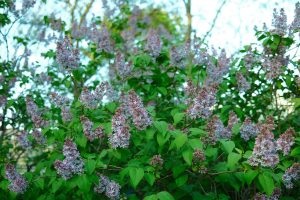
16-16-16 for Fall Vegetables: Balanced Nutrition for Leafy Greens and Root Crops
October is one of the most rewarding times for vegetable growers. Cooler temperatures create the perfect conditions for leafy greens like spinach, kale, and lettuce,

Soil preparation in the fall is one of the most overlooked yet impactful practices for building resilient gardens, farms, and landscapes. While many growers focus on spring fertilization, the truth is that what happens in the fall sets the stage for next year’s success. Among the most effective amendments to include in fall soil prep is magnesium sulfate.
Magnesium sulfate, often referred to as Epsom salt, provides two critical nutrients: magnesium and sulfur. Magnesium is essential for chlorophyll production, photosynthesis, and enzyme activation, while sulfur plays a central role in protein synthesis, nitrogen efficiency, and soil biology. Beyond feeding plants, magnesium sulfate stimulates soil microbes, energizes biological activity, and ensures nutrients are cycled effectively through winter into early spring.
At Supply Solutions LLC, high-quality magnesium sulfate is available for farmers, landscapers, and gardeners who want to maximize soil health through fall applications.
Magnesium is often thought of in terms of plant health, but its role in soil biology is equally important.
By adding magnesium in fall, soils are primed to support both winter cover crops and spring vegetables.
Sulfur is often forgotten because it used to be supplied naturally through rainfall and industrial activity. With cleaner air, sulfur deficiencies are now more common.
Adding sulfur in fall ensures soils have adequate reserves for spring crops.
Soil is alive, and microbes are the unseen workforce that makes nutrients available to plants. Magnesium sulfate contributes to microbial activity in several ways:
Fall application ensures microbial populations stay active through the cooler months, preparing soils for spring.
Timing matters in soil preparation, and October through November is an ideal window for magnesium sulfate.
Applying now creates a smoother transition into spring planting.
Commercial growers benefit significantly from fall magnesium sulfate applications.
For farmers, magnesium sulfate in fall is an investment in both soil health and crop profitability.
Landscapers managing ornamental beds, turf areas, or edible gardens also see major advantages.
For landscapers, magnesium sulfate elevates soil fertility programs with minimal cost and effort.
For home gardeners, magnesium sulfate provides easy and visible improvements.
For backyard growers, this amendment builds long-term soil health and short-term crop success.
While all crops need magnesium and sulfur, some benefit especially from fall applications.
By applying magnesium sulfate now, growers set these crops up for healthier growth in spring.
By avoiding these pitfalls, growers maximize the impact of fall magnesium sulfate applications.
At Supply Solutions LLC, magnesium sulfate is sourced for solubility and consistency. It dissolves easily, moves into soil quickly, and provides reliable magnesium and sulfur for crops and microbes alike. With expert guidance and reliable products, Supply Solutions LLC helps growers prepare soils for long-term productivity.
Fall is not the end of the season but the foundation of the next. By adding magnesium sulfate to fall soil prep, farmers, landscapers, and gardeners energize soil microbes, balance fertility, and prepare crops for spring growth. Magnesium strengthens photosynthesis and nutrient uptake, while sulfur supports protein formation and soil biology. Together, they create a healthier soil ecosystem that pays dividends in both resilience and yields.
For magnesium sulfate and other trusted fertilizers, visit Supply Solutions LLC. Reach us through our contact form, message us on Facebook, call 503-451-1622, or email sales@mysolutionssupply.com to get the products and guidance you need for healthier soils and stronger crops.

October is one of the most rewarding times for vegetable growers. Cooler temperatures create the perfect conditions for leafy greens like spinach, kale, and lettuce,

Landscapes in October may look like they are preparing for rest, but the work happening below the surface is just as important as the visible
Give us a call or visit our store, and we’ll help you find the right solution for your business.
© Supply Solutions LLC 2025